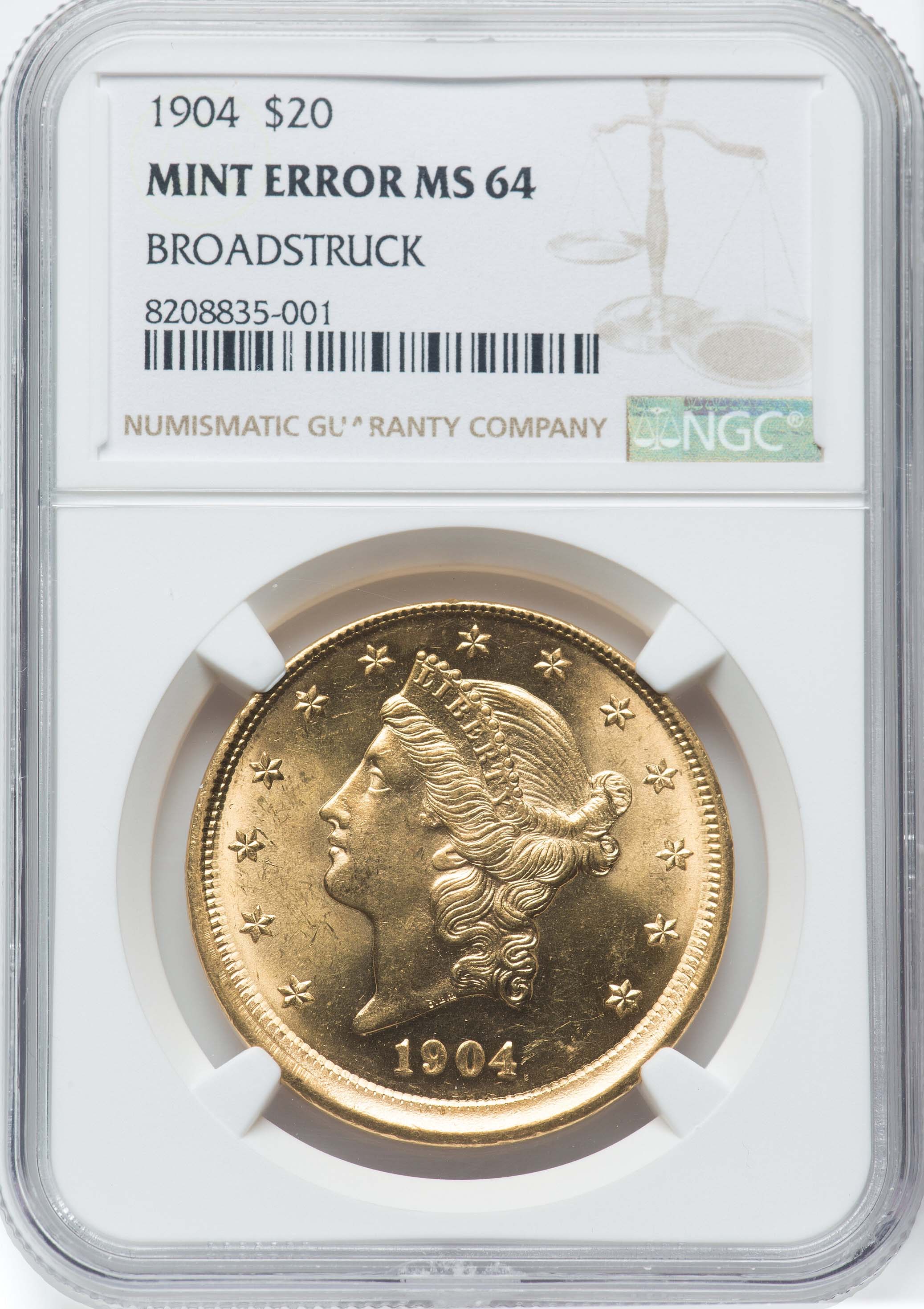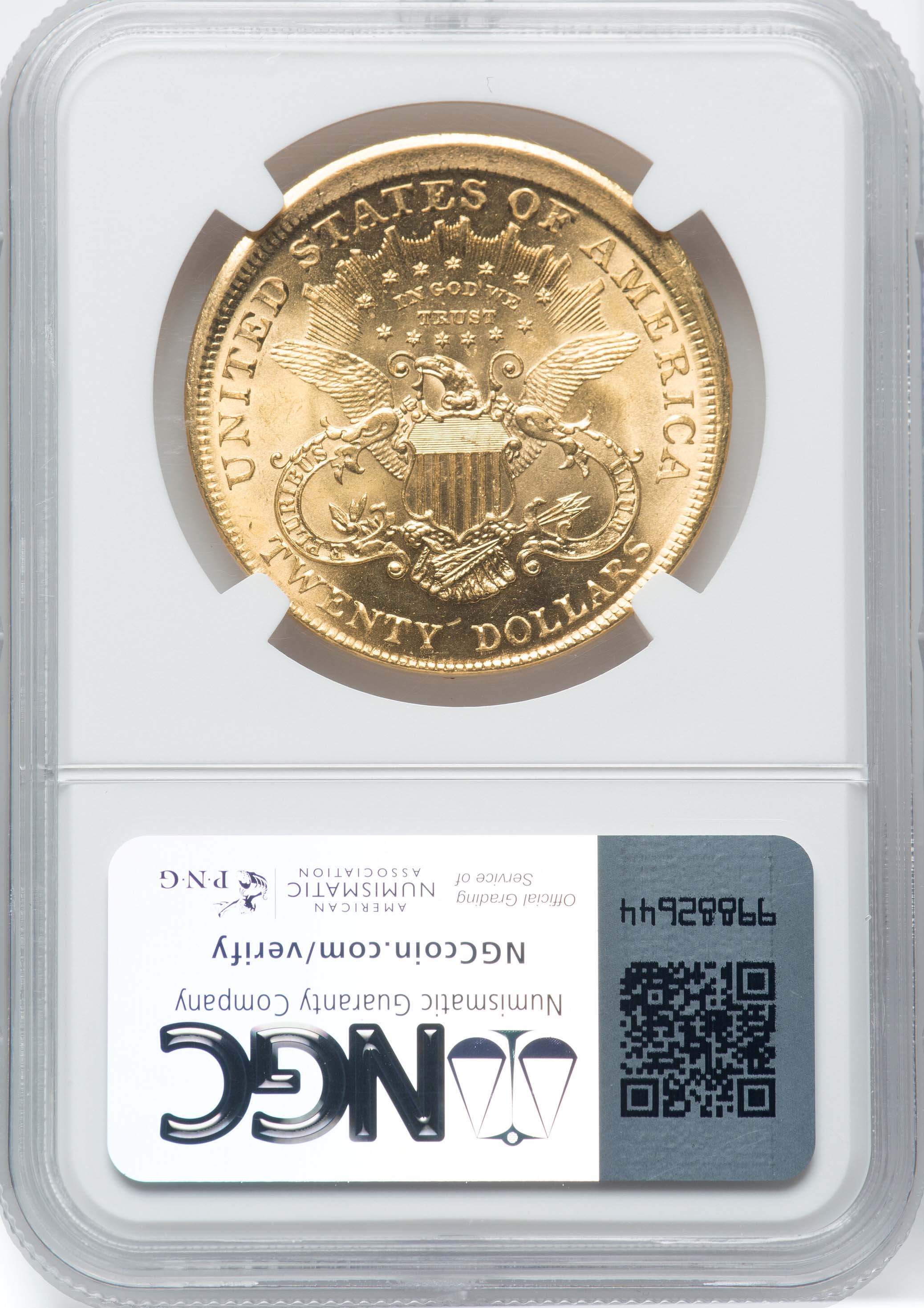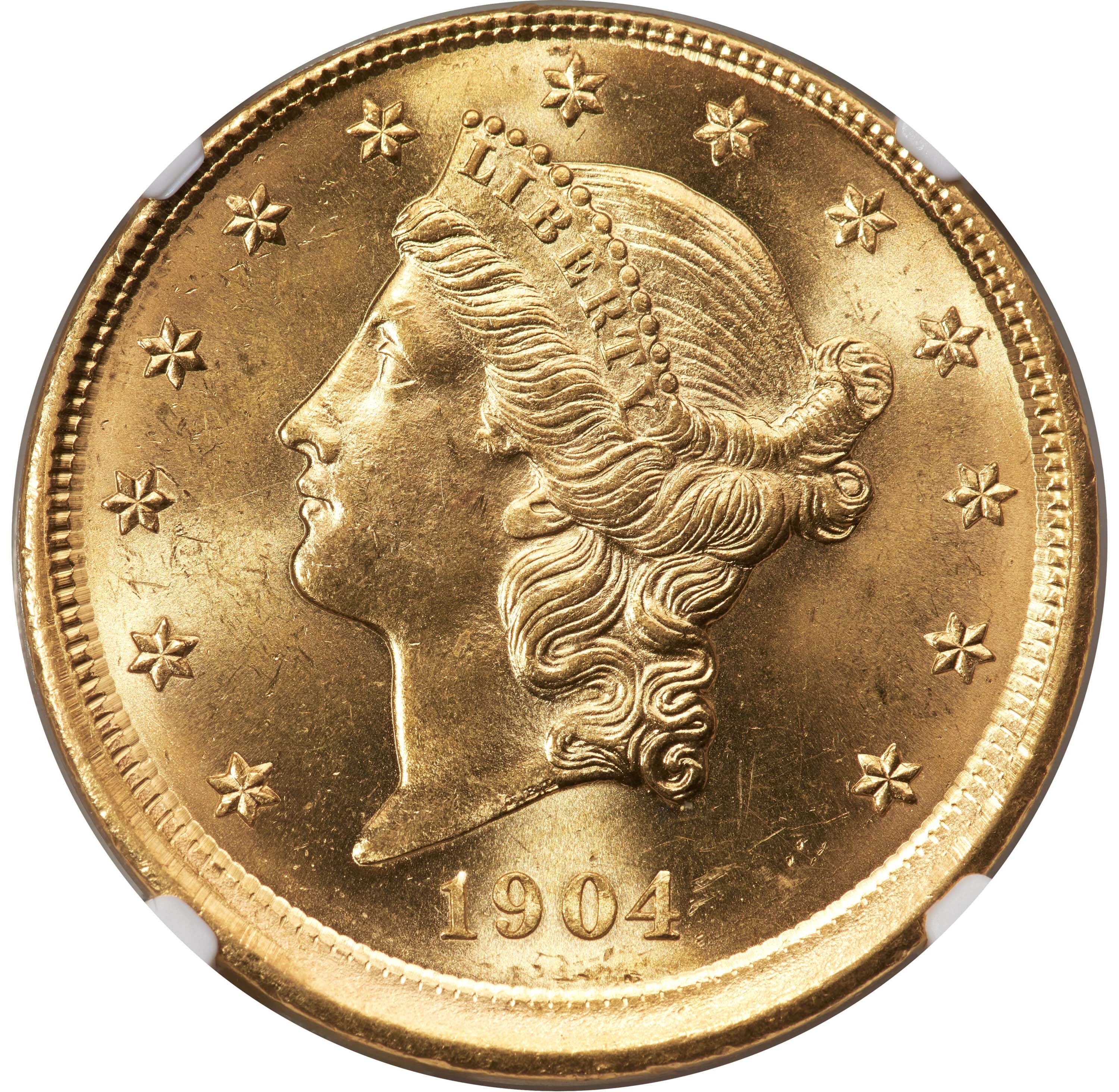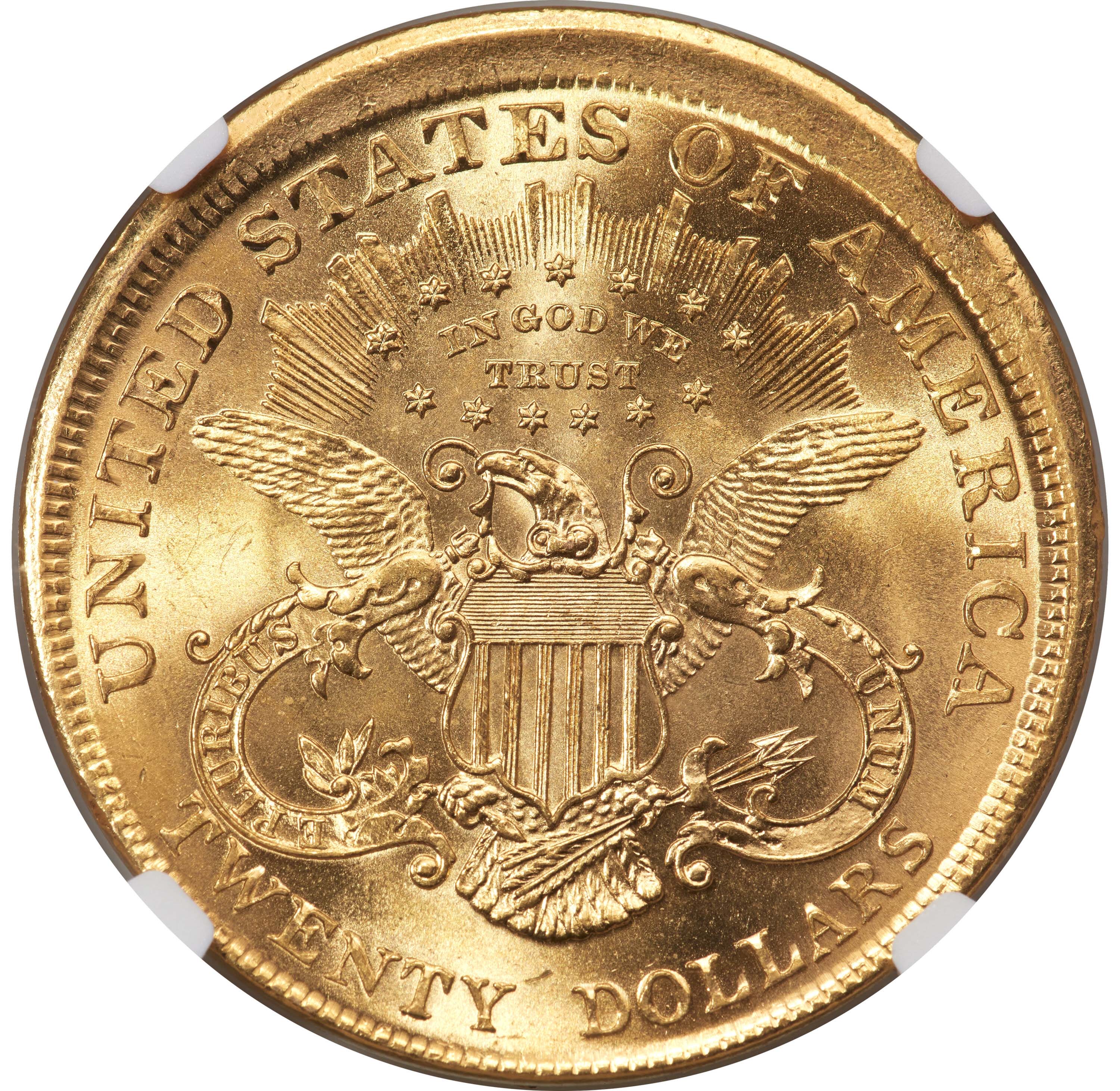Images Courtesy of Heritage Auctions, HA.com
The following mint errors were featured in the August 2024 ANA US Coins Signature® Auction #1376 and all set record prices for their prospective type.

From the Heritage auction listings:
1794 S-28 Head of 1794 Cent, MS66 Brown
Dramatically Double Struck
Sold For: $588,000.00
1794 1C Head of 1794, S-28, B-10, R.2 -- Double Struck -- MS66 Brown NGC. Heck Die State 6 or 7. The specific die state is difficult to determine due to the double strike of this example, although the die crack in the right obverse field of Heck Die State 6 is clearly present (twice) on this piece, and a faint clash mark above the hair and right of the cap, as described for his State 7 is visible. Most of the reverse die state features are obliterated due to the double strike. In this instance, of course, the double strike far outweighs the die state.
This piece is one of four S-28 cents that Del Bland grades MS60, and those four are tied for the finest examples of the S-28 die pair. Bill Noyes grades this piece MS62 and the finest known example. The double strike also trumps its census position as one of the four finest existing S-28 cents. This piece is illustrated at the beginning of the "Oops!" chapter in Walter Breen's Encyclopedia of Early United States Large Cents 1793-1814, describing a variety of large cent errors.
Renowned error expert Fred Weinberg observes:
"The right side strike was first, and off center, and then it was struck again, also off center. It is a superb mint error, especially in that degree of preservation. It must have been put aside immediately by someone who either found it fascinating, or recognized, even then, it's significance. This cent has incredible condition and eye-appeal for an early error of any denomination. Simply breathtaking."
Weinberg and his co-authors, Nicholas P. Brown and David J. Camire, compiled the book, 100 Greatest U.S. Error Coins, that was published in 2010. The many extraordinary error coins that they illustrate and describe include just five entries that were struck at the first U.S. Mint. There is no doubt that this impressive coin would have been included, and likely among the top 10 greatest errors, had the authors known of its existence. The authors discuss four factors when pricing error coins: the "wow" factor, the rarity of the error, the condition, and the popularity of the series.
This amazing double struck cent scores high marks for each of those factors. Everyone who has seen the coin has said "wow" or some similar comment. In fact, Dr. Schuman recalls when he first saw the coin that he was almost literally "floored." While there are possibly as many as eight to ten double struck 1794 cents known today, we are unaware of any others where both strikes are off center. The condition factor--it just doesn't get any better than this one. PCGS has certified 15 1794 cents in MS66 and three in MS67. NGC has examined four 1794 cents graded MS66 and just one finer (6/24). Those population totals are for 65 die marriages, and none of those grading events are for an error coin of any type. Finally, the popularity of the series is strong. Large cents have always been extremely popular with collectors, and more of those collectors seek 1794 cents than any other individual date.
The provenance of this amazing error begins with the New Jersey newspaper man, Frederick Charles Cogswell Boyd (1886-1958). The earliest record of Boyd's numismatic activity was in 1912 when he joined the American Numismatic Association. His acquisition of this double struck cent dates to the 46 year period from 1912 until his death in 1958.
While we are unaware of any attempt to document all known errors among the early cents other than the listing in the above-mentioned Breen reference, there are relatively few surviving large cent errors from the 1790s. That is not due to more careful workmanship during that period, but is to the handling of such "spoiled cents" as the Mint officers called them. Such coins were melted down to create new planchets, or they were cut-down to half cent diameter and used to strike half cents. There are a number of 18th and early 19th century half cents known today that exhibit remnants of the large cent design.
In addition to its impressive appearance, this Premium Gem is instructive. Both sides have an unstruck area that is preserved today much as it appeared in 1794. That portion represents the appearance of the planchet, and teaches us to recognize planchet marks as opposed to later handling marks on the early copper coins. This fully lustrous Premium Gem, in addition to its dramatic doubling, also exhibits essentially flawless brown copper surfaces that retain hints of original mint red. We are uncertain why the present piece was saved rather than melted with other errors in 1794. However, we are delighted that this breathtaking coin was preserved for today's collectors. With decades of professional numismatic experience, the present cataloger has seen countless spectacular coins of copper, nickel, silver, and gold. This extraordinary double struck cent is the most significant specimen of early American copper ever encountered.
Ex: F.C.C. Boyd; Paul Franklin (1959); John J. Ford, Jr. (4/10/1996 via Stack's); Dr. Robert A. Schuman.




1920 Lincoln Cent, MS62
Struck on a Silver Dime Blank
Sold For: $26,400.00
1920 Lincoln Cent -- Struck on a Dime Blank -- MS62 NGC. 2.5 grams. Memorial reverse Lincoln cents can be collected by issue struck on dime planchets or blanks, but Wheat Ear dates from relatively early in the series are rarely encountered in off-metal format. This lustrous and minimally marked silver cent has a sharp strike on design elements, save for UNUM, the O in ONE, and the 0 in the date. The obverse rim is broad and low relief between 5 and 10 o'clock, then narrows into no rim between 10 o'clock and 3 o'clock.




2005-P Sacagawea Dollar, MS64
Struck on a Nickel Planchet
Sold For: $24,000.00
2005-P Sacagawea Dollar -- Struck on a Nickel Planchet -- MS64 ANACS. The 2005-P Sacagawea dollar was struck only for collector sale, and wrong-planchet examples are undoubtedly rare. The present piece was struck flush against the collar die at 4:30. That clock position favored the date and mintmark, which are bold. Sacagawea and little Jean Baptiste are complete, as is the eagle except for the back wingtip. The well-preserved surfaces are richly toned in sea-green, russet-brown, and steel-gray shades.
Formerly in the Collection of Fred Weinberg.




(2008) Monroe Presidential Dollar, MS65
Struck on a Clad Dime Planchet
The Only Presidential Dollar Known on a Dime Planchet
Sold For: $20,400.00
(2008) $1 Monroe Presidential Dollar -- Struck on a Clad Dime Planchet -- MS65 PCGS. Presidential dollar errors are widely sought after as their own subset of the error collecting hobby. Often discussed are coins lacking their edge lettering, or unstruck planchets with edge lettering but no face designs. A number of Monroe Presidential dollars are known with these types of errors. However, the current piece is a first for us and quite intriguing -- a Monroe Presidential dollar struck on a dime planchet. Moreover, the strike is perfectly centered, with Monroe's portrait perfectly centered on the obverse, and the Statue of Liberty and denomination well framed on the reverse -- a combination that looks, quite frankly, intentional on the part of the design. The luster is also luminous and frosty, with champagne warmth throughout the nickel-gray patina. This coin can be dubbed "The Monroe dime" and it would be quite fitting.
Formerly in the Collection of Fred Weinberg.




1904 Double Eagle, MS64
Incredible Uncentered Broadstrike
Sold For: $60,000
1904 $20 -- Broadstruck -- MS64 NGC. Considering the large numbers of Liberty double eagles struck, it is a wonder that mint errors in this series are so rare. Of particular note is the rarity of broadstrikes -- coins struck without a collar, leaving the coin with a plain edge and an expanded planchet diameter. A 1906-D double eagle certified AU58 NGC was long heralded as the only known Liberty double eagle broadstrike, gaining quite a bit of fame as such. We handled that coin in our May 2003 Central States Signature, and it was later listed as unique in Mike Byers' World's Greatest Mint Errors. However, the current coin is every bit as intriguing as that piece, if not more so, and to our knowledge has not previously appeared publicly. This broadstruck 1904 double eagle is struck uncentered toward 12 o'clock, which serves to distinguish it from the 1906-D broadstruck coin, which is centered -- the coin offered here is therefore one of two documented Liberty double eagle broadstrikes, and the only uncentered broadstrike.
Sharp definition encompasses the details throughout this coin, complementing vibrant cartwheel luster and bright yellow-gold color. There are strikingly few abrasions for the grade, which further boosts the eye appeal. This coin is as beautiful and well preserved as it is rare as a broadstruck Liberty double eagle.




Here is the Mint Error News article on the first known broadstruck $20 Liberty that Mike Byers handled which is mentioned in the Heritage listing:
|

